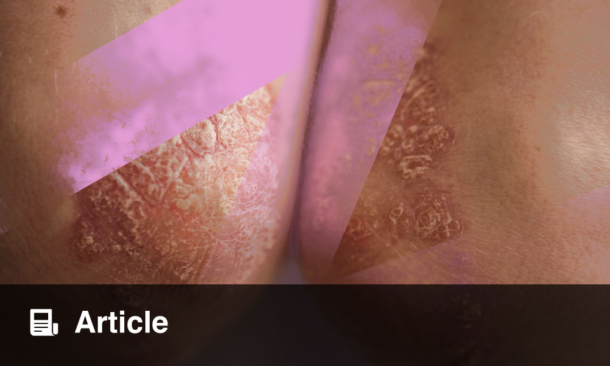Authors: Joseph McGrath,1,2 Nathan Kattapuram,3 Gunther Grinde,4 *Divya Sharma1
1. Department of Dermatology, University of Nebraska Medical Center, Omaha, USA
2. University of Minnesota Medical School, Minneapolis, USA
3. Georgetown University School of Medicine, Washington D.C., USA
4. University of Nebraska Medical Center, Omaha, USA
*Correspondence to [email protected]
Disclosure: The authors have declared no conflicts of interest.
Acknowledgements: McGrath and Kattapuram contributed equally to this work.
Keywords: American Academy of Dermatology (AAD) Annual Meeting, cancer biology, dermoscopy, melanoma, melanocytic neoplasms, overdiagnosis, 31-GEP.
Citation: Dermatol AMJ. 2025;2[1]:20-22. https://doi.org/10.33590/dermatolamj/LETT8214.
![]()
The American Academy of Dermatology (AAD) Annual Meeting is where many of the largest breakthroughs within the field of dermatology are presented. This year’s meeting provided numerous sessions on melanoma and melanocytic neoplasms with insightful updates as detailed below in tumor biology, genetic testing, and concerns regarding overdiagnosis of melanoma.
PLENARY: 2025 LILA ANDMURRAY GRUBER MEMORIAL CANCER RESEARCH AWARDAND LECTURESHIP
Cancer biology is imperative to enhancing our understanding of melanoma, and it not only involves the study of malignant cells, but also cells in the tumor microenvironment. Single-cell RNA sequencing allows investigators to profile millions of cells within solid tumor microenvironments and can be linked to traditional pathologic staining methods. For example, single-cell omics from the Histology Analysis Framework (SCHAF) can be used to computationally resolve single-cell molecular profiles from standard hematoxylin and eosin (H&E) images. This is one of many techniques that streamline elaborate biomolecular phenotyping of cancers down to the cellular level.
SCHAF and spatial proteomics have been used to show how malignant cells can promote T cell exclusion in melanoma, which is predictive of immunotherapy resistance. Computational modeling was subsequently used to discover that CD4/CD6 inhibition can reverse these T cell exclusion signatures, which suggests a drug targeting these receptors could represent a promising mode of addressing melanoma immunotherapy resistance.
The use of SCHAF and spatial proteomics to better understand the genotype and phenotype of each individual tumor cell underlies the direction of cancer research in the era of immunotherapy. The hope is that these methods can be used to develop additional melanoma therapies, such as individualized neoantigen cancer vaccines.1
THE 2025 DEBATES: CONTROVERSIES IN DERMATOLOGY
A significant number of melanomas are considered thin, with a Breslow depth less than 1 mm. Only about 5% of these thin melanomas will have occult metastases, and as such, they do not routinely get sentinel lymph node biopsy or imaging. However, roughly one-third of melanoma deaths stem from patients with thin melanomas.2 With this in mind, the question becomes whether tumor profiling using the 31-GEP test, a form of RNA transcriptomics, can inform decision-making for patients with melanoma.
The 31-GEP test has been validated for melanomas with a Breslow depth >0.3 mm. Patients with tumors that fall into a low-risk class (Class 1A) have a greater survival rate than those that fall into an intermediate (Class 1B/2A) or high-risk (Class 2B) class.3 In addition, one study found that patients undergoing 31-GEP testing had a 29% decrease in melanoma specific survival relative to patients who did not undergo testing.4 Proponents of the test also state that it can guide decisions around whether to perform imaging or sentinel lymph node biopsy, particularly in melanomas that have a Breslow depth between 0.3–0.8 mm, as these cancers would classically be labeled as very low-risk (5-year survival ~99%) based on the current American Joint Committee on Cancer (AJCC) 8th edition staging system.5 For example, if a patient has a Stage 1A melanoma (Breslow depth <0.8 mm without ulceration) but the melanoma falls into the 31-GEP high-risk class, a physician may choose to obtain a sentinel lymph node biopsy or imaging that would otherwise have not been indicated by the current guidelines.2
Critics of the 31-GEP test state that management is rarely altered by the test. These critics mention a study that suggested melanoma management was not altered in ~80% of cases that underwent 31-GEP testing.6 Most of the melanomas that received altered management secondary to 31-GEP testing were AJCC Stage 1A. While some patients in Stage 1A could receive more appropriate surveillance with the use of 31-GEP testing, critics are unsure if the use of healthcare resources is justified, given that each 31-GEP test costs ~7,000 USD. Other criticisms of the 31-GEP test include: 1) the test is typically only run on the more superficial portion of the melanoma collected from the biopsy and may miss more aggressive components of the tumor profile that occur deeper within the melanoma; and 2) there is not enough data available to demonstrate that 31-GEP testing is superior to the current prognostic indicators used in melanoma.7
Ultimately, additional studies and further discussion will be needed to determine if patients could benefit from more widespread use of the 31-GEP test.
APPROACH TOMELANOMA DIAGNOSIS
Melanoma incidence in the United States has increased drastically in the last 40 years, with incidence among White men increasing two-fold and incidence among White women increasing three-fold. However, melanoma mortality has been fairly stable during the same time period; though some decrease has been noted, likely secondary to improved therapeutics, such as immunotherapy. The epidemiological signature points to a potential overdiagnosis of melanoma, particularly among White patients. One study utilizing the SEER database estimated that ~65% of melanomas in White women and 50% of melanomas in White men were the product of overdiagnosis in 2018.8
While the reasons for overdiagnosis are not entirely clear, it is likely that population-based screening is playing a role. There is minimal evidence to suggest melanoma screening among the general population reduces mortality, but there is plentiful evidence demonstrating an increase in melanoma detection with screening. For example, one quality initiative study in the United States found that increased screening led to a 2.5-fold increase in melanoma detection.9 Along with increased screening, physician concern about the liability associated with missing a melanoma diagnosis may also contribute to overdiagnosis.
Given that overdiagnosis of melanoma can lead to unnecessary procedures and testing for patients, it is crucial to identify and address the underlying causes behind melanoma overdiagnosis.10
DERMOSCOPY FOR THENON-DERMOSCOPIST
Dermoscopy can be crucial for differentiating between benign and malignant pigmented lesions. Several high-yield dermoscopy tips for detecting suspicious pigmented lesions include: 1) examining the lesion for angulated lines in patients with sun-damaged skin; 2) white streaks in melanomas are finer than they are in basal cell carcinomas, and they often sparkle when rotating the dermatoscope; 3) think about performing a deeper biopsy on lesions with an irregular pattern of blue pigment; and 4) a negative network within a nevus may be a sign of melanoma.11







